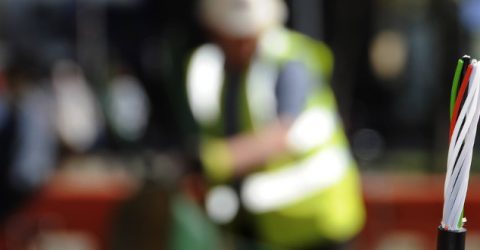TalkTalk to spend £1.5bn to give 3 million homes FTTH broadband

TalkTalk has announced plans to lay out over £1.5bn to connect up three million UK homes to a new Fibre to the Home network.
TalkTalk will set up a separate company to deal with the massive expansion, promising 1Gbps (gigabit) download speeds and similar upload speeds to all new customers.
It’s a bold move by the UK’s second-largest broadband firm to take away some of the power of smaller Fibre to the Home installers like Gigaclear and Hyperoptic.
At gigabit speeds customers can download a three-hour HD film in under a minute, and upload 200 photos in less than 10 seconds.
Because Fibre to the Home is a direct connection, it doesn’t have to piggyback on copper wiring which slows down the majority of UK broadband.
Fibre, or not fibre?
The Advertising Standards Authority made good headway by introducing new rules this year that will force ISPs to sell broadband based on “average” speeds, rather than using rarely useful “up to” figures.
Ofcom: Up to speeds are dead by 2019, now it’s average
But it made a major error by saying that companies like TalkTalk and BT should still be allowed to sell “fibre” broadband even when the majority of the connection is not made up of fibre.
The news infuriated activists and consumer groups who have been campaigning for clearer rules over the way fibre broadband is sold.
Currently ISPs are allowed to sell broadband packages by advertising that buyers will receive ‘up to’ a certain speed. You’ll see this as ‘up to 17Mbps’ for the cheapest lines, going as far as ‘up to 76Mbps’ for faster services.
But a frankly ridiculous state of affairs in the advertising code means that only 10 per cent of consumers have to be able to achieve that maximum speed for it to be legal for them to sell on this basis.
Fibre to the Cabinet
At the moment, internet providers like TalkTalk, Sky and BT can sell “fibre” broadband based on years-old technology, even though the whole connection is not made up of fast fibre cables.
Fibre to the Cabinet (FTTC), as it is sometimes known, still uses the old method of sending broadband data down a telephone line.
This is why new broadband connections still need you to have a telephone line installed at your property, even if you never use this landline for making calls.
FTTC produces broadband with a maximum line speed of 76Mbps. A cheaper version, with speeds capped to 38Mbps is also on general sale.
But the last part of a connection from the green street cabinet to your home still uses copper, or sometimes aluminium telephone cables, vastly slowing down the potential speed and reliability you can get.
Fibre to the Home
Fibre to the Home doesn’t rely on copper cables or street cabinets. Because it uses fibre-optic cables direct from the ISP to your home or business, it can produce download and upload speeds that are markedly the same.
Fibre to the Cabinet is “asynchronous” – which means that downloads are a lot faster than uploads.
For example, Plusnet recently boosted the upload speeds of its Fibre to the Cabinet broadband from less than 1Mbps to 9.5Mbps. This upload speed is still much slower than the download speeds of 50-75Mbps available.
Fibre to the Home is “synchronous” – which means it can handle download and upload speeds at the same rate.






